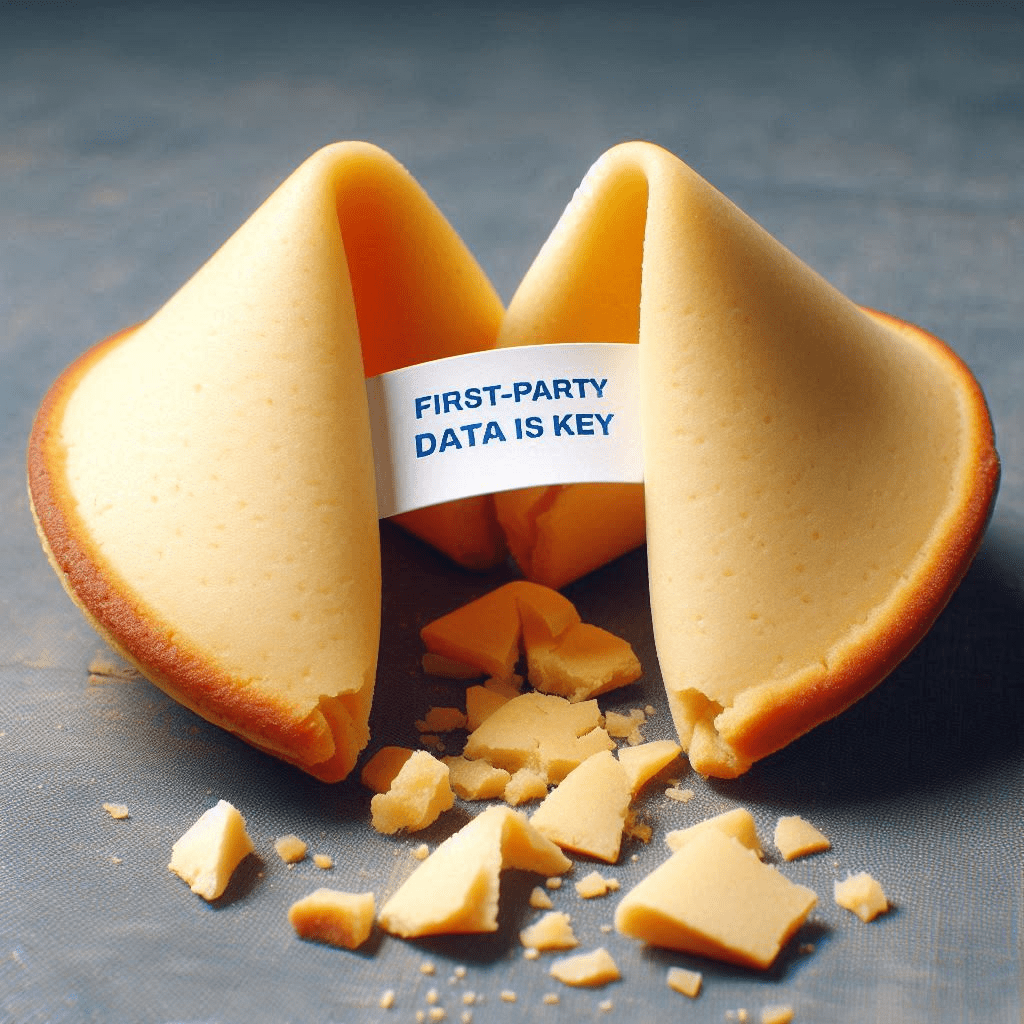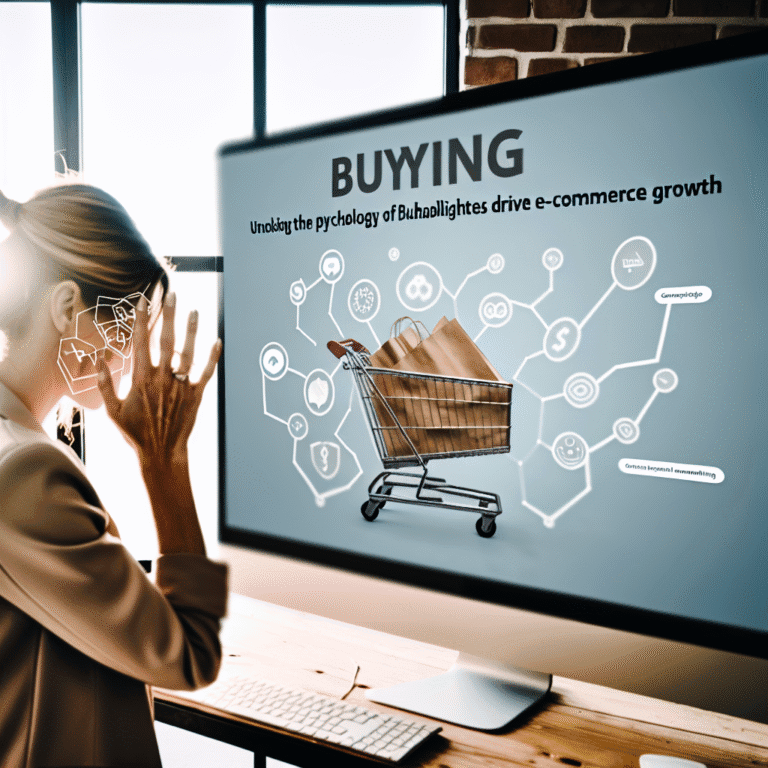The online advertising landscape is undergoing a seismic shift with the phasing out of third-party cookies. This “cookieless future” may seem daunting for e-commerce businesses who have relied on these cookies for targeted advertising. But fear not! This guide will equip you with the knowledge and strategies you need to not only survive but thrive in this new era of data privacy. We’ll explore the reasons behind the cookieless future, its potential impacts, and actionable strategies to ensure your e-commerce business continues to flourish. Let’s navigate the cookieless future together!
Understanding the Transition: Exploring a Cookieless Future
What Are Cookies?
Think of cookies like tiny crumbs of data websites leave on your browser. These crumbs track your online activity, remembering things like what you add to your basket or the websites you visit. This information is then used to target you with ads relevant to your interests – that pair of shoes you browsed yesterday mysteriously popping up everywhere you go online!
There are two main types of cookies:
- First-party cookies: These are placed directly by the website you visit. They’re essential for things like remembering your login details or keeping items in your shopping basket.
- Third-party cookies: Placed by other websites, these track your activity across different platforms. This is what allows advertisers to follow you around the web with targeted ads.
The Third-Party Cookie Controversy
Third-party cookies have come under fire for privacy concerns. Imagine someone following you around every shop you enter, noting down everything you look at. That’s essentially what third-party cookies do! This lack of user control over their data has sparked a privacy rights movement, pushing for a more user-centric online experience.
There are also security risks associated with third-party cookies. Hackers can exploit them to steal personal information or inject malware into your device.
What Does “Cookieless” Mean?
A cookieless future simply means a world where third-party cookies are no longer used for tracking and advertising. This doesn’t mean all cookies are going away – first-party cookies will still be around for essential website functionality. But advertisers will need to find new ways to reach their target audience.
The shift towards a cookieless future has several implications:
- Increased user privacy: Users will have more control over their data and how it’s used.
- Challenges for advertisers: Reaching and targeting audiences will become more complex without third-party cookie data.
- Opportunities for innovation: New technologies and strategies will emerge to address the limitations of a cookieless environment.
Why Have a Cookieless Future?
The move towards a cookieless future is driven by several factors:
- Privacy concerns: Consumers are increasingly demanding control over their data, and regulations like GDPR (General Data Protection Regulation) are putting user privacy at the forefront.
- Security risks: Third-party cookies can be vulnerable to hacking and data breaches.
- Cost savings: Maintaining and managing third-party cookie infrastructure can be expensive.
While there are challenges for advertisers, a cookieless future can also benefit consumers by giving them greater control over their data. It also pushes the industry to innovate and develop new, more privacy-focused solutions.
Preparing for Change: Strategies for the Cookieless Future
Now that we understand the cookieless future and its implications, let’s delve into strategies to ensure your e-commerce business continues to thrive.
Why Are Cookies Being Phased Out?
Several factors are driving the phasing out of cookies, with privacy concerns at the top of the list. A 2022 study by CEO.digital found that 80% of UK consumers are concerned about how their data is used. Regulations like GDPR are empowering users with more control over their data, making third-party cookies a less viable option for advertisers.
There’s also the issue of security. Third-party cookies can be vulnerable to malware and hacking attempts and malvertising using third-party cookies is on the increase. With the growing threat of cybercrime, phasing out third-party cookies is a step towards a more secure online environment.
Here’s a specific timeline to keep in mind: Google Chrome, the world’s most popular browser, plans to completely phase out third-party cookies by early 2025, although this date keeps getting pushed back in the midst of pressure from industry, regulators, and developers. This means e-commerce businesses need to adapt their strategies now.
Potential Impacts of a Cookieless Future
The cookieless future has far-reaching consequences for various stakeholders in the e-commerce ecosystem. Let’s explore the potential impacts:
- For Users:
- Increased Privacy: This is the silver lining! Users will have greater control over their data and how it’s used. They’ll likely see fewer intrusive, irrelevant ads following them around the web.
- Focus on Contextual Advertising: Ads will likely become more relevant to the content users are currently viewing rather than their past browsing history. Imagine seeing ads for hiking boots while reading an article about mountain trails, instead of those shoes you casually looked at weeks ago!
- For Site Owners:
- Challenges in Attribution: Tracking conversions and attributing sales to specific marketing efforts will become more complex without third-party cookie data. This means relying more on first-party data and other tracking methods.
- Importance of First-Party Data: Building a strong foundation of first-party data, collected with user consent, becomes crucial. This includes information like purchase history, demographics, and website behaviour.
- For Marketers:
- Shift in Targeting Strategies: Marketers will need to develop new strategies for audience targeting without relying solely on third-party cookies. This might involve contextual advertising, leveraging first-party data, and building stronger customer relationships.
- Focus on Personalization: Personalization efforts will become even more important. By understanding user preferences and behaviour through first-party data, marketers can deliver a more tailored shopping experience, increasing engagement and conversions.
How To Prepare for a Cookieless Future
Now that we’ve grasped the potential impacts, here are actionable strategies to prepare your e-commerce business for the cookieless future:
- Stay Aware of Emerging Privacy Threats:
The landscape of data privacy is constantly evolving. Staying informed about new regulations and consumer preferences is vital. Subscribe to industry publications, attend webinars, and keep an eye on updates from major tech companies like Google and Apple.
- Use Alternative Identifiers:
While third-party cookies are on their way out, alternative identifiers are emerging to fill the gap. These might include contextual targeting solutions, hashed emails, or first-party data consortiums. Explore these options and choose methods that align with your business needs and user privacy considerations.
- Create a Better Privacy Policy:
Transparency builds trust. Develop a clear and concise privacy policy that explains how you collect, use, and protect user data. Highlight your commitment to user privacy and make it easy for users to manage their cookie preferences.
- Invest in First-Party Data Collection:
First-party data is gold in the cookieless future. Implement strategies to collect valuable customer data with user consent. This could involve offering loyalty programs, gated content downloads, or website surveys in exchange for user information.
Once you have this data, segment your audience based on demographics, purchase history, and browsing behaviour. This allows for more targeted marketing campaigns and personalized product recommendations that resonate with your customers.
- Focus on Building Strong Customer Relationships:
Building trust and loyalty with your customers goes a long way in the cookieless future. Here are some ways to achieve this:
- Provide Excellent Customer Service: Make sure your customer service channels are efficient and responsive. Happy customers become repeat customers and brand advocates.
- Develop a Loyalty Program: Reward loyal customers with exclusive discounts, early access to sales, or birthday rewards. This incentivises repeat business and fosters brand loyalty.
- Engage with Customers Through Email Marketing: Build an email list and develop engaging newsletters with valuable content and promotions. This allows you to connect with your audience directly and nurture long-term relationships.
Remember: The cookieless future isn’t about doom and gloom. It’s an opportunity to build stronger relationships with your customers, prioritise user privacy, and innovate with new marketing strategies. By taking a proactive approach and implementing these strategies, your e-commerce business can thrive in the years to come.
Ensuring Readiness: Addressing Data Privacy Concerns
The cookieless future is driven by a growing focus on data privacy. As an e-commerce business owner, understanding and complying with data privacy regulations is crucial. Here’s what you need to know:
Data Privacy – What It Is and What You Need to Know:
Data privacy refers to a user’s right to control their personal information. This includes how it’s collected, used, shared, and protected. Key data privacy regulations impacting e-commerce businesses include:
- GDPR (General Data Protection Regulation): A regulation in EU law that protects the data privacy of all individuals within the European Union and the UK. It requires businesses to obtain clear and informed consent from users before collecting their data, and provides users with the right to access, rectify, or erase their personal information.
- CCPA (California Consumer Privacy Act): A law that grants California residents the right to know what personal information is being collected about them, to delete their data, and to opt-out of the sale of their personal information.
- Personal Data Protection Act (PDPA) in Singapore: Similar to GDPR, the PDPA regulates the collection, use, and disclosure of personal data by organisations in Singapore. It emphasises consent, purpose limitation, and accountability in handling personal data.
- LGPD (Lei Geral de Proteção de Dados) in Brazil: Modelled after the GDPR, LGPD governs the processing of personal data in Brazil, providing individuals with control over their data and imposing obligations on organisations handling personal information.
- PIPEDA (Personal Information Protection and Electronic Documents Act) in Canada: PIPEDA regulates the collection, use, and disclosure of personal information by private sector organisations in Canada. It shares some similarities with GDPR in terms of requiring consent for data collection, ensuring data security, and providing individuals with access to their personal information.
These regulations, along with others like POPIA (Protection of Personal Information Act) in South Africa, are setting the standard for data privacy worldwide. Even if your business isn’t located in the EU or California, it’s wise to be familiar with these regulations, as they may apply if you have customers from those regions.
How to Ensure Compliance:
Here are some key steps to ensure your e-commerce business is compliant with data privacy regulations:
- Conduct a Privacy Audit: Assess your current data collection practices and identify any potential gaps in compliance.
- Update Your Privacy Policy: Review and update your privacy policy to clearly explain what data you collect, how you use it, and the legal basis for doing so.
- Implement Consent Management Tools: Make it easy for users to provide consent for data collection and offer them clear options to manage their cookie preferences.
- Invest in Data Security: Implement robust security measures to protect user data from unauthorised access or breaches.
By following these steps, you can demonstrate your commitment to user privacy and build trust with your customers. Remember, data privacy is not just about compliance; it’s about building a sustainable and ethical business model.
Frequently Asked Questions About the Cookieless Future
Here are some of the most commonly asked questions about the cookieless future:
How Can I Prepare My E-commerce Business for a Cookieless Future Now?
When Will Third-Party Cookies Actually Be Phased Out of Google Chrome?
Isn’t First-Party Data Collection Invasive Too?
How Does Cookieless Advertising Work?
In a cookieless environment, advertisers will need to rely on alternative methods to target and reach their audience. Here are some potential approaches:
- Contextual Advertising: Ads will be placed based on the content of the webpage a user is viewing, rather than their browsing history. For example, ads for gardening tools might appear on a website with articles about vegetable gardens.
- First-Party Data Targeting: Leveraging data collected directly from your customers, like purchase history or website behaviour, allows for more targeted marketing campaigns within your own ecosystem.
- Customer Relationship Marketing (CRM): Building strong customer relationships through loyalty programs, email marketing, and personalised recommendations can foster brand loyalty and drive repeat business.
While cookieless advertising may require a shift in strategy, it also presents an opportunity to build more trust-based relationships with your customers.
Is My Business Ready for the Cookieless Future?

Here are some signs your business might be ready for the cookieless future:
- You have a strong foundation of first-party data collection with user consent.
- Your website offers a seamless user experience that encourages repeat visits and engagement.
- You prioritise building trust and transparency with your customers.
If you’re unsure about your readiness, consider conducting a data privacy audit and evaluating your current marketing strategies. There are also many resources available online and from industry experts to help you navigate the cookieless future.
By addressing these frequently asked questions, we’ve provided readers with a more comprehensive understanding of the cookieless future and its implications.





